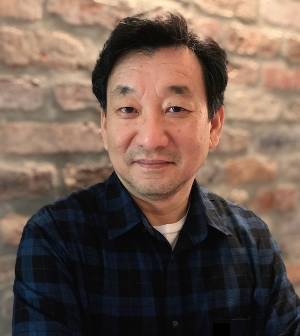Hwang Lee
Associate Professor of Physics
Ph.D., 1998 - Texas A&M University
Louisiana State University
Department of Physics & Astronomy
451 Nicholson Hall, Tower Dr.
Baton Rouge, LA 70803-4001
225-578-2365-Office
hwlee@phys.lsu.edu
Quantum Science and Technologies Group
Research Interests
Quantum Optics and Quantum Information Processing – Theory
We investigate non-classical states of radiation fields and their applications in precision measurements, quantum computing, and quantum communication. Our studies include design of efficient single-photon sources and detectors, squeezed states and optical interferometers, and quantum repeaters for entanglement sharing and quantum networks.
Quantum Optical Interferometry:
Optical interferometry provides one of the finest tools for precision measurement. It is to determine the optical phase difference imprinted by the physical quantity of interest, between the two paths of light propagation. The maximum capability of the interferometer is limited by the inherent uncertainty imposed by quantum mechanics. This scaling limit which is due to the photon-counting error is called the shot-noise limit. The emergent field of quantum metrology utilizes certain quantum effects, such as quantum coherence, quantum entanglement, and squeezing, to push the capability of optical interferometers. The improvement in the sensitivity from the shot-noise limit of scaling to the ultimate limit, the Heisenberg limit of means that the same sensitivity can be achieved with less number of photons—less optical power and less radiation-pressure noise. Such reduction of the light intensity at the same level of sensitivity and resolution will provide huge benefits for any interferometric precision measurement and remote sensing and may provide crucial advances in biomedical sensing where light intensity is a critical restriction. We study quantum correlations input states of light, quantum state engineering to produce desired inputs, and output-measurement strategies for such quantum enhanced optical interferometers.
Quantum Networks:
One of the main goals of quantum information science is to establish long-distance quantum communication channels that could lead to secure quantum internets and/or distributed quantum computing. When photons travel more than a certain distance in optical fibers (on the order of 10-100 km), various noise and absorption degrade the efficiency and fidelity of the quantum communication channel. Quantum repeaters are designed to increase the spatial length of the quantum channels by utilizing successive entanglement swapping at the nodes in-between the two end points. Our primary focus here is simulation of near-term entanglement-based networks and optimization of connection and routing protocols for efficient generation of long-distance quantum channels.
Current and Select Publications
- Haldar S, Barge PJ, Khatri S, and Lee H, “Fast and reliable entanglement distribution with quantum repeaters: principles for improving protocols using reinforcement learning,” Physical Review Applied 21, 024041 (2024). https://doi.org/10.1103/PhysRevApplied.21.024041
- Haldar S, Barge PJ, Xiao X-Q, Lee H, “Optimizing the phase sensitivity of a Michelson interferometer with a two-mode squeezed coherent input,” AVS Quantum Science 5, 034401 (2023). https://doi.org/10.1116/5.0148632
- Barge PJ, Niu Z, Cuozzo SL, Mikhailov EE, Novikova I, Lee H, Cohen L, “Weak thermal light quadrature-noise shadow imaging,” Optics Express 30, 29401 (2022). https://doi.org/10.1364/OE.455646
- Cuozzo SL, Barge PJ, Prajapati N, Bhusal N, Lee H, Cohen L, Novikova I, Mikhailov EE, “Low-Light Shadow Imaging using Quadrature-Noise Detection with a Camera,” Advanced Quantum Technologies 2100147 (2022). https://doi.org/10.1002/qute.202100147
- Xiao X-Q, Matekole ES, Zhao J, Zheng G, Dowling JP, Lee H, “Enhanced phase estimation with coherently boosted two-mode squeezed beams and its application to optical gyroscopes,” Physical Review A 102, 022614 (2020). https://doi.org/10.1103/PhysRevA.102.022614